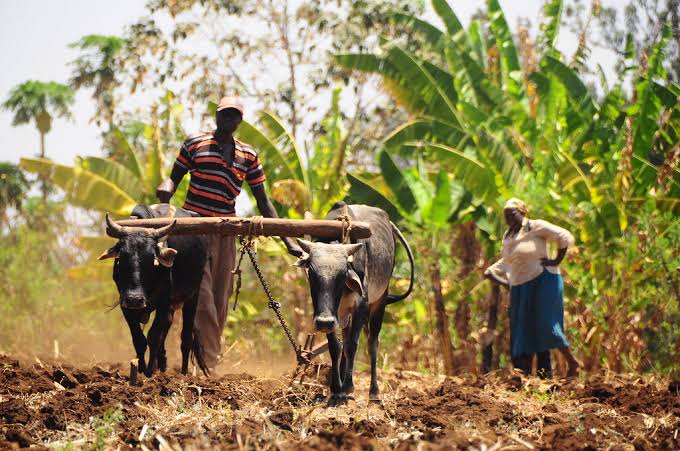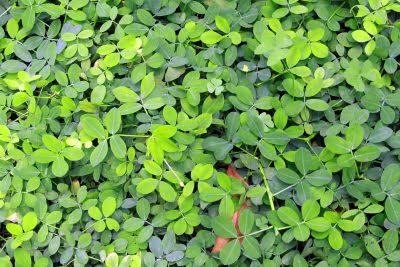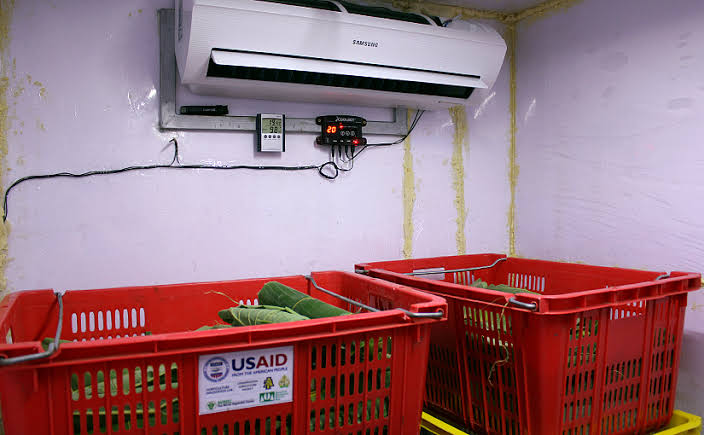
For Joseph Njuguna a farmer in Nyandarua, farming was a typical exercise of planting and waiting for crops to grow. It was until a visit by the extension officers that he took farming
the extension officers that he took farming seriously and has now managed to turn his farm into a cash cow.
Having land adjacent to Aberdare forest meant that he was exposed to rainfall, but the same rainfall at times caused havoc in his farm washing away his crops. But a serious rethink has now transformed his 15 acre plot from a barren land to a food basket with grass, napier grass, fruit trees, vegetables and potatoes occupying the land.
In his farm, he has grass strips cropped horizontally and fruit trees along the edges, which,he said, has saved him from the massive loss of his crops. "Now I harvest 20 bags of potatoes from each acre and have comfortably grown fodder crops on some acres to feed my three cows. Before, I just had one cow and struggled to feed due to lack of grass," he said.
Related News: Organisation launches online seed informational tool to enable farmers access critical data in one click
Njuguna is among many farmers in Kenya who have improved their food security following access to information on better farming methods from the ministry of agriculture. Continued use of the poor agricultural practices is among the factors resulting to low harvests among the rural small scale farmers in Kenya, according to the country’s agriculture ministry.
The small scale farmers in the East African nation make up 98 percent of the total food production, some of which is consumed locally while the rest is exported. "Without encouraging small scale farmers to adopt better ways of farming like agro-forestry which includes growing crops and trees, we will not be able to be food secure,"said Peter Ng’ang’a, an agricultural official based in Nyandarua County.
He said when farmers leave their pieces of land bare, they expose it to soil erosion which erodes the fertility needed for successful growth of crops.
"Take an example of Njuguna, if he did not start growing grass covering the soil, thereby controlling the velocity of run-off, he could not be harvesting anything," noted the agricultural official. Njuguna is among the farmers who have gained from the advice of the agricultural official, who visited his farm and guided him on ways to bear rich benefits from his 15-acre agricultural land.
Among the initiatives the country’s ministry of agriculture is effecting is enlightening farmers on modern technologies effective in reducing soil erosion while increasing crop yields. This is done through the farmers’ field days, on which they meet the agricultural officials, and visit regional agricultural exhibitions where successful farming ventures are exhibited.
"However farmers are encouraged to be very aggressive and visit the Ministry of Agriculture offices in their respective locations for information on variety of crops to grow at a certain area and period," Ng’ang’a noted. According to the Soil Atlas of Africa, a publication of the Food and Agriculture Organization in collaboration with EU and African Union; increased pressure on existing agricultural areas, mono-cropping, overstocking and ploughing of the of marginal lands unsuitable for cultivation are some of the factors causing rapid soil degradation in Africa.
Farmers are therefore advised to shift from the traditional methods of farming to the productive means of agriculture that focus on maximizing soil fertility and minimizing its degradation.
Related News: AGRA launches new book on sustainable use of fertiliser
Related News: Youth in Agriculture: 25-year-old consultant creates 900-farmer information network
With the growing population in Kenya, Peter Kimani, a specialist in crop production, noted the need for educating small scale farmers on farming systems that allow the soil to recover its nutrients. "Farmers are using the wrong kind of fertilizer not recommended for in acidic or alkaline soils.
"The more they use them the more they dwindle their harvests. They need information,"said Kimani.
He said farmers should be encouraged to practice strip cultivation to prevent soil erosion in their farming lands. Under this farming system, farmers are expected to leave unploughed vegetated strips between tilled land and allowing buffer zones of indigenous plants to grow along the river banks.
However, he added that can happen if more extension officials are deployed in each location to reach out to remote farmers who are unable to access the agriculture offices.


















